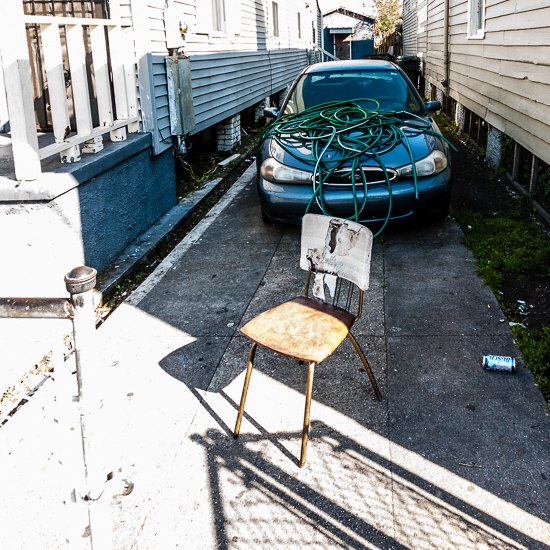 The policewoman, let’s call her Ann Marie, doesn’t stop talking as she shows me the crime scene photographs of the woman who shot me when I was seven years old. This is the first time I’ve seen the photos of her suicide, though I was seven a long time ago. Twenty-four years.
The policewoman, let’s call her Ann Marie, doesn’t stop talking as she shows me the crime scene photographs of the woman who shot me when I was seven years old. This is the first time I’ve seen the photos of her suicide, though I was seven a long time ago. Twenty-four years.
These are my scars: two bullet holes on my left arm; one bullet hole on my left breast alongside my nipple; one long, badly healed incision down the center of my stomach; one incision the shape of an x next to my left breast where they inserted a tube in my collapsed lung so I could breathe. And hidden beneath my pale, freckled skin, my blue eyes, my brown hair: a bullet I carry in my back next to my spine.
I will have them, my five scars, my one bullet, until I really die, not almost die, or was supposed to die, like that day. If you drew a line from where the bullet went in, to where it ended up, it should’ve gone straight through her heart. We don’t know why it didn’t. That’s what the surgeon said to my waiting parents. I’ve imagined that diagram of my death often, the bullet’s path drawn on white paper, my heart exploding in a pencil’s grey lines.
Mostly I don’t mind them, my five scars, my one bullet, because minding them doesn’t do anything. It doesn’t make them go anywhere. But sometimes, I can’t help wishing I didn’t have them. That I could run my hand along a smooth, uninterrupted stomach. That a stranger didn’t try to kill me for no reason at all.
These are the other things she did that day: set off a bomb in an elementary school that didn’t explode trying to kill her two nephews; locked two children whom she babysat and their mother in a basement and lit the house on fire; shot five other kids she didn’t know in my elementary school, killing one boy, eight years old; held hostage a young man home for the summer from college and shot him.
In the police station, Ann Marie and I sit under fluorescent lighting in an overly air-conditioned conference room done in shades of blue. Her talking is nervous chatter of the bubbly, meaningless sort. The sort designed to fill awkward spaces. Ann Marie seems afraid that seeing the photos will make me cry and keeps talking, hoping to keep it from happening. I’m afraid of crying too. I want to ask her to please be quiet, to let me have this moment to myself, but I don’t.
And so as she talks and talks, I mostly don’t listen. I look at the square, yellowed photographs of the woman, after she committed suicide, shot herself in her mouth. They are in a binder, in plastic sleeves, four to a page, numbered. She’s in a bedroom of the house where she held the young man hostage. She’s lying on her stomach on lime green, shag carpeting. Next to her is a twin bed neatly made with frilly cream bedding that looks like a wedding cake. There are clothes and books strewn about the floor and a pair of white patent leather shoes. Her face rests on its side on her right arm. Her left arm is pulled in at an angle by her cheek. She’s wearing yellow sweatpants cut off just past her knees and an off-white short-sleeved t-shirt and black slip on shoes with rubber soles. Her lips are slightly parted. Blood pools behind her head and is splattered on her pale face, her arms, her fingertips. The slender hand she used to shoot me and the other children and the young man, and then finally herself, is extended. And though her hand is empty—no longer holding a gun—her trigger finger is bent. Her eyes now emptied of their rage are not like I remember at all. They are blank. A wide-open space.
—
Kathryn Miller recently received her MFA in creative nonfiction from the University of North Carolina, Wilmington. This is her first publication. She lives in Oregon, where she is working on a memoir currently titled The Shooting.

4 comments
Facing the Fear: On “Wide Open Spaces” | BREVITY's Nonfiction Blog says:
Oct 4, 2013
[…] Kathryn Miller discusses the origin of her recent Brevity essay, Wide Open Spaces: […]
Nightstand 2013: Week Forty-One | The Quotidian Diary says:
Oct 7, 2013
[…] “Wide Open Spaces” by Kathryn Miller (Brevity, September 12, 2013) […]
Paul Cuclis says:
Dec 18, 2013
Congratulations on the first publication. I enjoyed the style of your writing. It’s precise, unadorned, and, in my opinion, it uses just the right amount of understatement necessary for this kind of memoir. Well done.
Kathryn Miller says:
Feb 12, 2014
Thanks very much for taking the time to read my piece and for your kind words of encouragement, Paul. I really appreciate it.